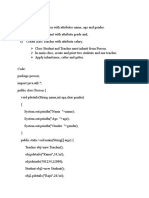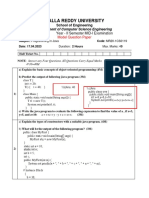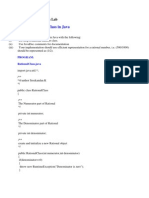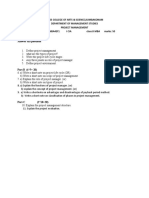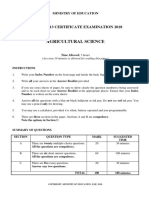0% found this document useful (0 votes)
75 views6 pagesJava Library Management Code
The document discusses code for a library management system using hierarchical inheritance in Java. It includes:
1) A parent LibraryItem class with fields for title, year, and author and methods to display this information.
2) Two child classes Book and Journal that inherit from LibraryItem. Book adds a pageCount field and Journal adds a publisher field.
3) A main method that creates Book and Journal objects, sets their fields, and calls displayInfo() to output the object information.
4) Tasks to modify the code to add details for 10 books and write/read data from a file by getting user input and displaying it.
Uploaded by
ashrithreddy160Copyright
© © All Rights Reserved
We take content rights seriously. If you suspect this is your content, claim it here.
Available Formats
Download as PDF, TXT or read online on Scribd
0% found this document useful (0 votes)
75 views6 pagesJava Library Management Code
The document discusses code for a library management system using hierarchical inheritance in Java. It includes:
1) A parent LibraryItem class with fields for title, year, and author and methods to display this information.
2) Two child classes Book and Journal that inherit from LibraryItem. Book adds a pageCount field and Journal adds a publisher field.
3) A main method that creates Book and Journal objects, sets their fields, and calls displayInfo() to output the object information.
4) Tasks to modify the code to add details for 10 books and write/read data from a file by getting user input and displaying it.
Uploaded by
ashrithreddy160Copyright
© © All Rights Reserved
We take content rights seriously. If you suspect this is your content, claim it here.
Available Formats
Download as PDF, TXT or read online on Scribd
/ 6






















